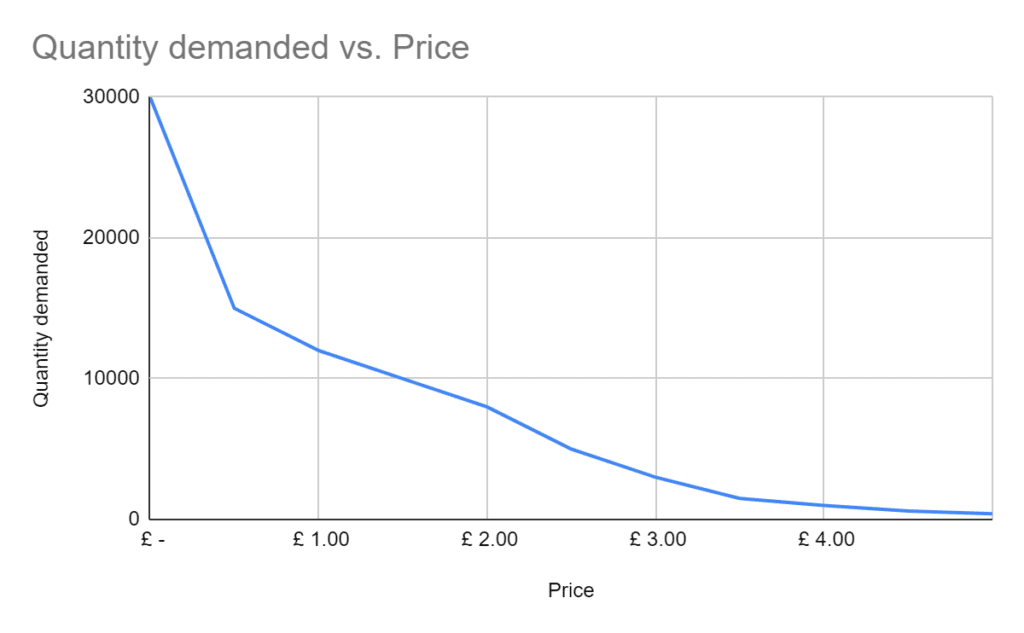Definition of demand: the measure of market participants level of desire to buy goods or services at different prices.
What is demand?
Demand is an economics concept which you’ll frequently see referenced in the best economics books. Demand represents the desire of all citizens for all goods and services. It reflects whether a citizen would choose to pay for a specific good or service.
As you’ll appreciate from your own personal experience of desire, demand is multi-dimensional and doesn’t remain still.
Our desires and preferences can change based upon the:
- Price of the product
- Time of day
- Popularity or fashion ability of the product
- Whether there is an immediate need
These are not insignificant factors, each of an individually make the difference between someone choosing to buy a product in one circumstance, and not buying in another.
The relationship between demand and price
The relationship between demand and price is extremely important.
This is because virtually every good and service is demanded by all citizens if the price is low enough. It’s therefore the most important factor which interacts with demand.
Economists like to show this with a price demand curve. The X axis shows price, and the Y axis show the volume of products demanded.
If we plot the number of products demanded at each price, we can connect these to create a demand curve, which visually shows the relationship between price and demand.

Demand curves always slope downwards, because as the price of a product increases, fewer people will want to, or be able to buy it.

How is the word demand used in a sentence?
“The aggregate demand curve has shifted upwards.”
“At a higher price, a lower quantity will be demanded”
What else you should know about demand
Demand can also be considered from the perspective of an individual, rather than an entire market place.
We can consider ‘how much quantity would one individual buy at each price point?’
This is a relevant thought experiment for shops and supermarkets, who design price promotions in a way that will encourage shoppers to spend more overall.
They need to understand what level of discount is needed to trigger shoppers to spend more. This will allow analysts to assess whether a promotion would increase turnover and gross profit for the business.
Interestingly, the demand curve for an individual looks similar to an overall market place – a downward sloping curve. We buy less when prices are higher.
This is because of other economics concepts such as diminishing returns or marginal utility.
In a nutshell, we tend to place less value on each additional item we consume. At a restaurant, we might be willing to pay £3.50 for a portion of fries, but only £5 for two portions, and £5.50 for three. After all, once we’re stuffed to bursting with potato – fries become practically worthless to us.
How does the definition of demand relate to investing?
When buying shares in the stock market, or investing in property, the price you pay will be governed by the level of demand and supply for those investments.
For more information, best investing books and investing courses will guide you on how to assess when is the right time to invest and how to assess whether an investment represents good value at its market price.